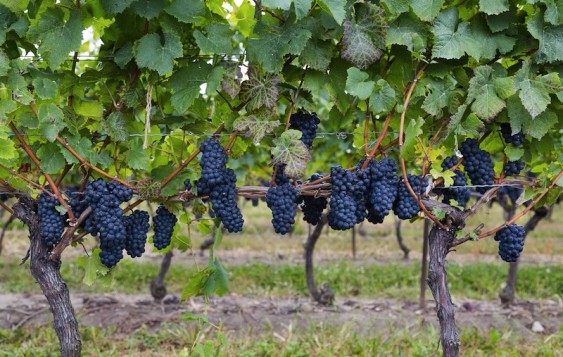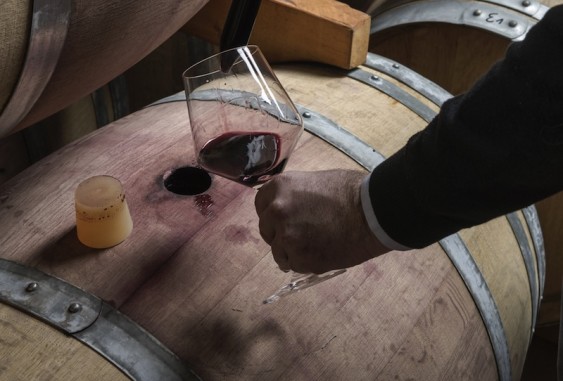While I would never want you to sound like a douche when talking about wine, I am always a fan of learning new wine-related terms. Especially when those terms sound both pretentious and ridiculous. Here are five wine terminology gems I’ve recently come across that I just can’t resist using now that I know them. I hope you enjoy them as much as I do. Better yet, play a drinking game where you get to drink another glass every time you deftly weave one of these into conversation.

Don’t know what kind of grapes these are? An ampelographer could tell you just from looking at the leaves!
Ampelography: To me, this sounds more like the study of vases than anything else, but in fact, it is the identification and classification of grape varieties. You see, before there was DNA testing, folks would have to determine which kind of grape was which by looking at the leaves and other features of a grapevine such as its shoots, flowers and berries. My personal favorite variety identified this way? Malbec, because its leaves tend to be heart-shaped. Aw!
The reason this was important was that, depending on which kinds of grapevines you had, you might want to plant them in different soils and locations to optimize your fruit. Not only that, but if you were buying or importing vines, you would want to know what you were getting before you actually planted them. Imagine buying what you thought was Merlot only to end up with Sauvignon Blanc when the grapes appeared!

So that’s what a bung hole is!
Bung: You Gen-Xers might know this term from Beavis & Butthead, but bungs and bungholes have been around a lot longer than the Great Cornholio. In fact, bung likely derives from the Dutch word bonge (go figure), which means “stopper.”
A bung is just a piece of material used to stopper a container such as a wine barrel. This seals off the interior of the barrel and prevents both liquids and gases from getting in or out. A wine-barrel bung is usually made from cork, hardened rubber or even glass, and is generally shaped as a cylinder or partial cone.
Technically, the corks in wine bottle also count as bungs. But we just call them corks. Even when they’re not made from cork. So all corks are bungs, but not all bungs are corks, or made of cork. By that logic, though, I might suggest starting to call your corks bungs. As in, “Hey pal, would you mind unbunging this bottle for me?” or, “There’s no need to sniff the bung, the wine is fine.” Double points in the drinking game if you refer to a corkscrew as a bungscrew.
Isinglass: No, it’s not the name of some sort of elven stronghold from Lord of the Rings. It’s even weirder! Isinglass is a gelatin derived from the air bladders of freshwater fish (usually sturgeon). It is used as a fining agent to remove yeast and any other particles that can make a wine appear cloudy. The good news is, if you use isinglass to fine a wine, it won’t end up tasting fishy. The bad news is, if you’re a strict vegan, wines that are fined using isinglass (and most other fining agents such as egg whites) are verboten.
Rancio: This is a funny little term that describes that funny little nutty flavor certain fortified wines like Sherry or Madeira can develop. While this is often a sought-after characteristic of these wines that results from just the right amount of carefully managed oxidation, it can also describe wine that has gone a bit off. It basically means rancid, but with a Spanish accent. I can also picture Valley girls using it as slang, though. “Dude, that is so rancio!”

I just like the way ullage sounds – but it is actually the amount of air in the bottle.
Ullage: To me, this sounds like some sort of bodily fluid leak. Yeah, I went there. But in reality, ullage is the amount by which a container holding wine is unfilled – the space between the surface of the wine and the top of the barrel or the bottle. It can indicate things like how the wine was stored, how much of it has evaporated in barrel or bottle, and whether it will still be intact when opened. But it’s also important to include a little bit of ullage in bottles so that if the temperature changes, the contents of a wine bottle can expand and contract without causing damage to the container.
Have any other great wine terms to share? Tweet me @clustercrush!

